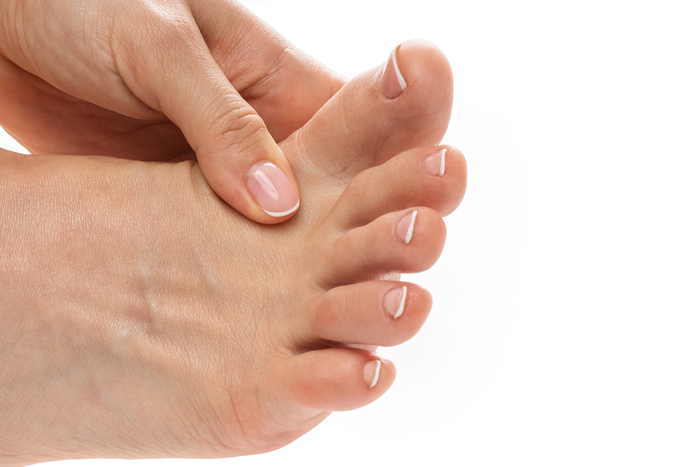
Feel better faster. Get care today.
From the clinic or your couch. Find high quality, same-day urgent care for you and your kids. Book an urgent care visit today.

A dislocated toe is a fairly common injury that can occur during various activities, from sports to everyday mishaps. A dislocation happens when the bones in a joint become displaced, causing the toe to appear out of alignment and often resulting in pain, swelling, and difficulty moving the affected area. Understanding how to identify the signs of a dislocated toe and knowing the best recovery strategies can help individuals manage the injury effectively and return to their normal activities as quickly as possible. In this article, we will explore the symptoms of a dislocated toe, how to treat it, and tips for a smooth recovery.
According to Kaiser Permanente, recognizing the signs of a dislocated toe is crucial for prompt treatment and recovery. The symptoms can vary in intensity, but they often manifest in noticeable ways that indicate an injury has occurred. Kaiser Permanente notes that if you suspect a dislocated toe, look out for the following symptoms:
Bruising and swelling
Crooked appearance
Pain or difficulty moving the toe
Severe pain (you may hear a snap or tearing sound)
Numbness or pins-and-needles feeling

From the clinic or your couch. Find high quality, same-day urgent care for you and your kids. Book an urgent care visit today.
According to Kaiser Permanente, diagnosing a dislocated toe typically involves a thorough evaluation by a healthcare professional, who will assess both the physical symptoms and the mechanism of injury. A detailed medical history and physical examination are essential first steps, as they help the doctor understand the circumstances surrounding the injury and the specific symptoms being experienced. However, to confirm the diagnosis and rule out any associated fractures or complications, doctors may order additional imaging tests.
X-rays are the most common diagnostic tool used to visualize the alignment of the bones in the toe and determine if a dislocation has occurred. In some cases, if the injury is complex or if the doctor suspects other underlying issues, they may recommend further imaging studies such as MRI scans or CT scans. These advanced imaging techniques provide a more detailed view of the soft tissues, ligaments, and cartilage around the joint.
Additionally, tests like angiography may be utilized to assess blood flow if there are concerns about vascular injury, while electromyography can help evaluate nerve function in the area. Together, these diagnostic methods enable healthcare providers to make informed decisions regarding the most appropriate treatment plan for a dislocated toe.
According to Kaiser Permanente, when dealing with a dislocated toe, immediate first aid is essential to alleviate pain and prevent further injury before seeking professional medical attention. Taking the right steps can help stabilize the situation and promote comfort. Here are some key first-aid tips to follow if you suspect a dislocated toe:
Prevent the toe from moving; avoid putting weight on the affected toe.
Lie down and prop your foot up so it’s higher than your heart to reduce swelling.
Apply an ice pack or some ice wrapped in a towel to the area to minimize pain and swelling.
Kaiser Permanente notes that the primary goal of treatment is to realign the bones in the toe and restore normal function, which can often be achieved through two main methods: closed reduction and open reduction. Closed reduction is a non-surgical procedure where a healthcare professional carefully manipulates the dislocated toe back into its proper position without making any incisions. This method is typically performed in an office or clinic setting and is often effective for straightforward dislocations.
In contrast, open reduction is a surgical procedure that may be necessary in more complex cases, such as when there are multiple dislocations, associated fractures, or significant soft tissue damage. During open reduction, the surgeon makes an incision to access the joint directly, allowing for more precise alignment of the bones and repair of any damaged structures. While surgery is not always required for a dislocated toe, it is essential to evaluate the injury thoroughly to determine the best course of action. After either type of reduction, a period of rest, immobilization, and rehabilitation is typically recommended to ensure proper healing and regain strength and mobility in the toe.
Recovering from a dislocated toe is a crucial phase that requires careful attention to ensure proper healing and prevent re-injury. Kaiser Permanente reccomends that following the initial treatment, it is important to adopt a recovery plan that emphasizes rest and gradual progression back to normal activities. Here are some essential tips from Kaiser Permanente to aid in your recovery from a dislocated toe:
Rest, icing, and elevation are your first steps to recovery; ensure you give your toe time to heal.
Avoid immediately returning to your usual level of activities to prevent aggravating the injury.
Physical therapy and special exercises may be prescribed to help restore strength, flexibility, and function in the toe.
If you or someone you know is experiencing a dislocated toe or any other urgent injury, don't wait to seek care. Visit Solv today to find urgent care facilities near you.
The common signs of a dislocated toe include bruising and swelling, a crooked appearance, pain or difficulty moving the toe, severe pain which may be accompanied by a snap or tearing sound, and a numbness or pins-and-needles feeling.
A dislocated toe is diagnosed by a healthcare professional through a thorough evaluation which includes a detailed medical history and physical examination. To confirm the diagnosis and rule out any associated fractures or complications, doctors may order additional imaging tests like X-rays, MRI scans, or CT scans. In some cases, angiography may be used to assess blood flow if there are concerns about vascular injury, and electromyography can help evaluate nerve function in the area.
Immediate first aid for a dislocated toe includes preventing the toe from moving and avoiding putting weight on the affected toe, lying down and propping your foot up so it’s higher than your heart to reduce swelling, and applying an ice pack or some ice wrapped in a towel to the area to minimize pain and swelling.
The treatment methods for a dislocated toe include closed reduction and open reduction. Closed reduction is a non-surgical procedure where a healthcare professional carefully manipulates the dislocated toe back into its proper position. Open reduction is a surgical procedure that may be necessary in more complex cases. After either type of reduction, a period of rest, immobilization, and rehabilitation is typically recommended to ensure proper healing and regain strength and mobility in the toe.
Some tips for recovering from a dislocated toe include rest, icing, and elevation as your first steps to recovery, avoiding immediately returning to your usual level of activities to prevent aggravating the injury, and following a physical therapy and special exercises regimen as prescribed to help restore strength, flexibility, and function in the toe.